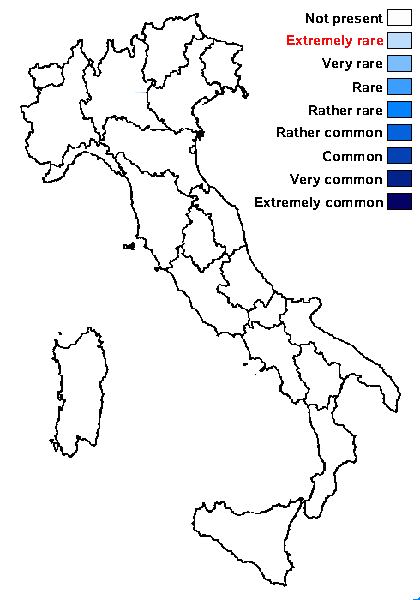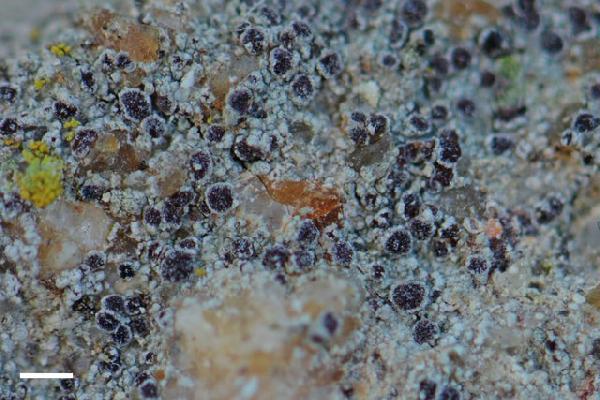Lecania sordida Reese Næsb.
Mycologia, 100, 3: 413, 2008
Synonyms:
Distribution:
Description: Thallus crustose, episubstratic, thick, dirty white, grey, dark grey, or dirty brown, irregular or fragmented, subleprose or granular, rarely blastidiate. Apothecia lecanorine, (0.17-)0.2-0.4(-0.5) mm across, sessile and constricted at base, with a pale brown, red-brown or dark brown, often piebald when wet, soon convex disc, and a dirty white to grey, usually persistent thalline margin. Thalline exciple with a colourless to red-brown medullary part; epithecium red brown, the colour extending as irregular streaks into the 43-52 µm high hymenium; paraphyses coherent, the apical cells markedly swollen, 4.5-6(-7) µm wide, some of them with a dark pigment cap; hypothecium colourless to pale brown. Asci 8-spored, narrowly clavate, with a K/I+ blue tholus and a central non-amyloid area, Bacidia-type. Ascospores 1-septate, hyaline, ellipsoid, straight, (10-)11-13(-16) x (3-)3.5-4 µm. Photobiont chlorococcoid. Spot tests: Thallus K-, C-, KC-, P-. Chemistry: without lichen substances.Note: on slate, brick, and phyllite, often on tombstones. Known from Northern and Central Europe, to be looked for in Italy.
Growth form: Crustose
Substrata: rocks
Photobiont: green algae other than Trentepohlia
Reproductive strategy: mainly sexual

Predictive model
Growth form: Crustose
Substrata: rocks
Photobiont: green algae other than Trentepohlia
Reproductive strategy: mainly sexual

Predictive model
 Index Fungorum
Index Fungorum
 GBIF
GBIF


